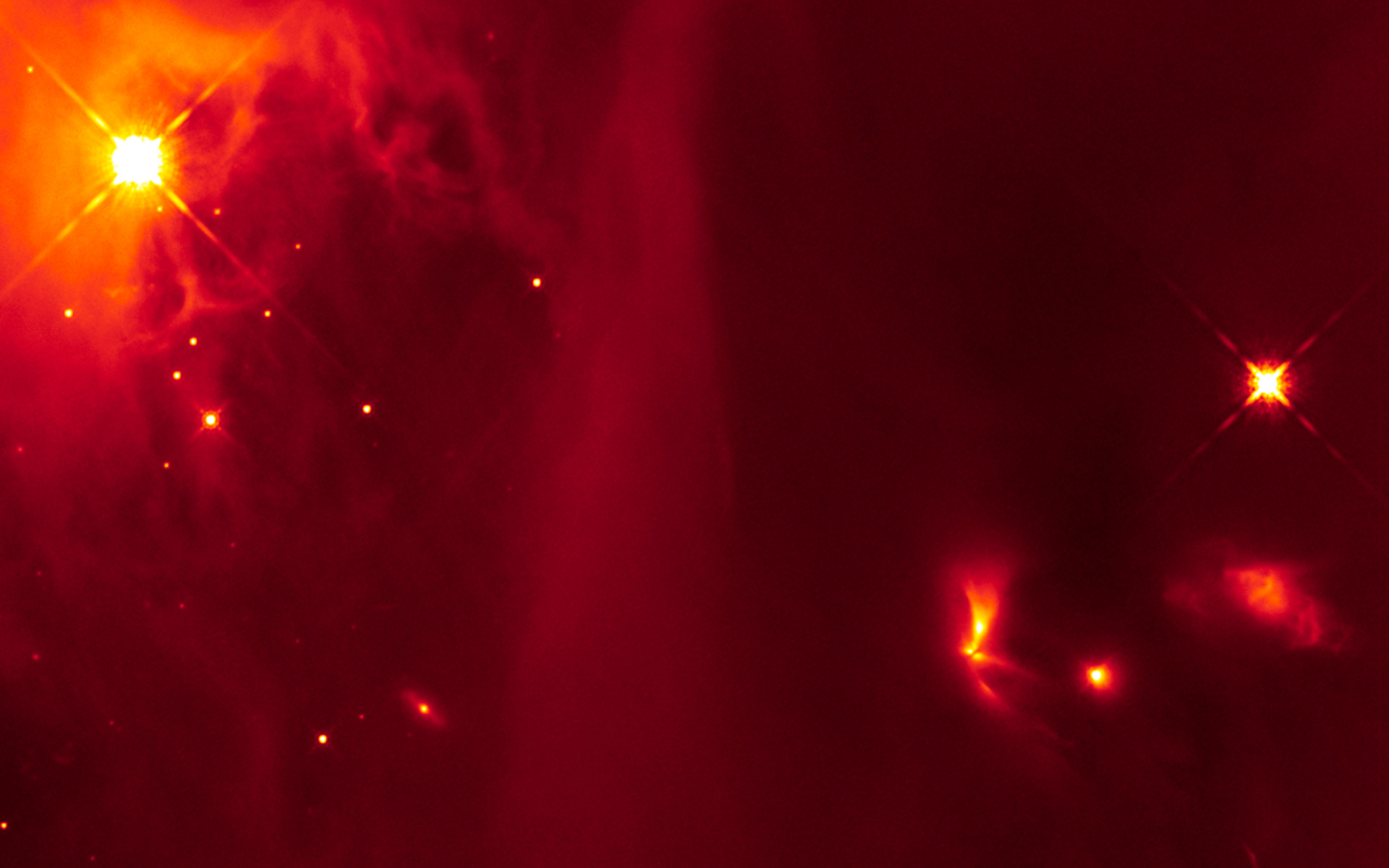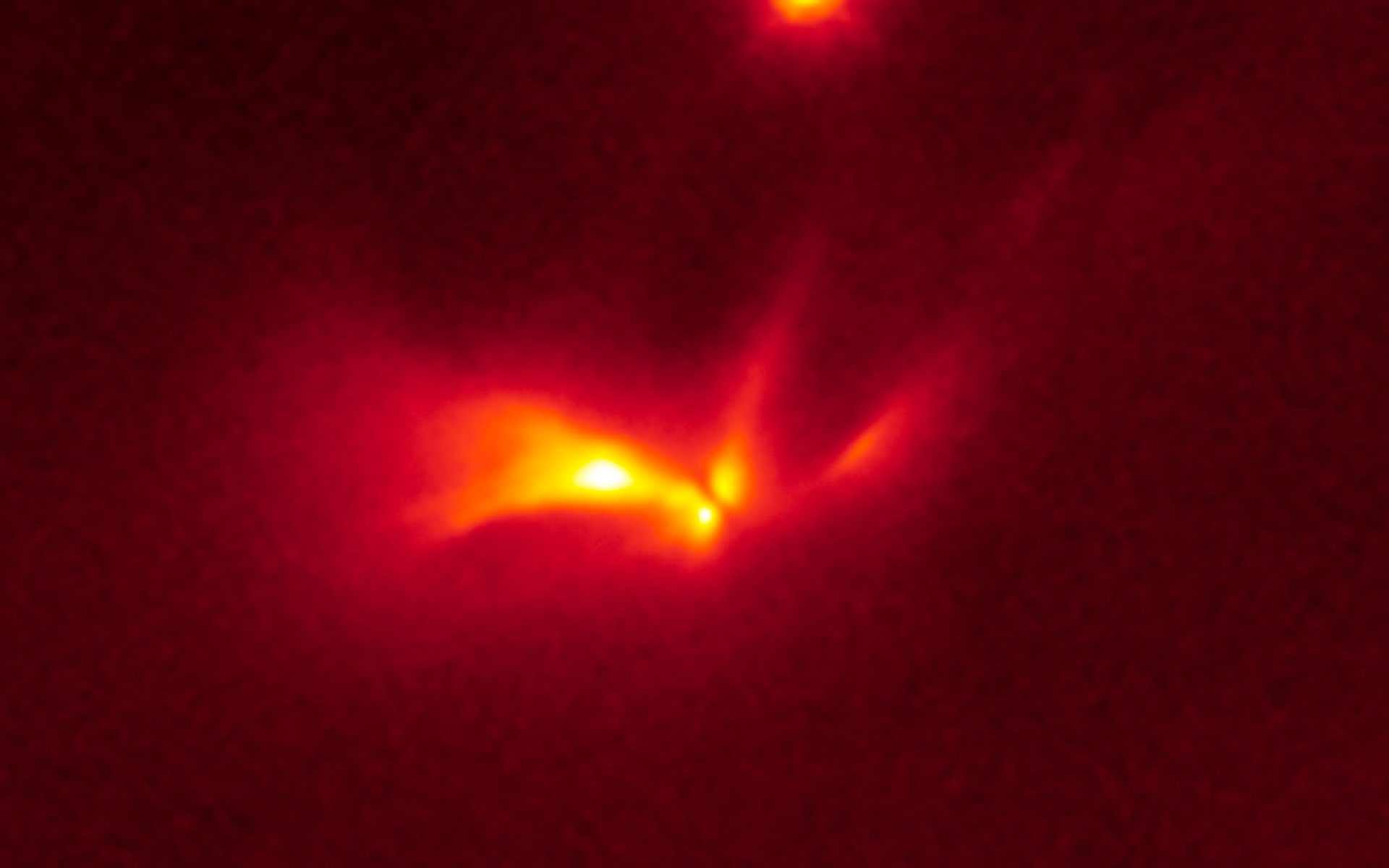Rare 'Strobe Light' Star May Actually Be Twins

An odd flashing star may actually be a pair of cosmic twins: two newly formed baby stars that circle each other closely and flash like a strobe light, scientists say.
Astronomers discovered the nascent star system, called LRLL 54361, with the infrared Spitzer observatory and the Hubble Space Telescope, and say the rare cosmic find could offer a chance to study star formation and early evolution. It is only the third such "strobe light" object ever seen, researchers said.
The celestial oddity is located about 950 light-years from Earth and lets out a bright pulse of light every 25.34 days. Hubble telescope scientists said the baby star object (or protostar) is the most powerful such stellar strobe found to date. But understanding what's causing the flashing light is difficult, because the system is hidden behind opaque dust and a dense disk of material.
"This protostar has such large brightness variations with a precise period that it is very difficult to explain," astronomer James Muzerolle of the Space Telescope Science Institute in Baltimore, Md., said in a statement. Muzerolle is the lead author of a paper detailing the finding published recently in the journal Nature.

However, Spitzer's infrared eyes were able to peer through the dust enough to discern signs of a protostar, or a pair of protostars, no more than a few hundred thousand years old.
Follow up observations with Hubble showed a dusty disk of material around the object with two empty cavities above and below it. These cavities were likely blown out by a powerful outflow coming from the central stars.
The scientists suspect that when the two stars swoop close in their orbits, they drag dust and gas from the surrounding disk, which then falls on one or both of the stars, which let up a flash of light.
Get the Space.com Newsletter
Breaking space news, the latest updates on rocket launches, skywatching events and more!
Astronomers have seen such a phenomenon, called pulsed accretion, before, but never in a system so young, flashing so regularly and intensely.
Close binaries like LRLL 54361 are rare in the galaxy, so scientists think this system may represent a short-lived phase of star systems' evolution.
You can follow SPACE.com assistant managing editor Clara Moskowitz on Twitter @ClaraMoskowitz. Follow SPACE.com on Twitter @Spacedotcom. We're also on Facebook & Google+.
Join our Space Forums to keep talking space on the latest missions, night sky and more! And if you have a news tip, correction or comment, let us know at: community@space.com.

Clara Moskowitz is a science and space writer who joined the Space.com team in 2008 and served as Assistant Managing Editor from 2011 to 2013. Clara has a bachelor's degree in astronomy and physics from Wesleyan University, and a graduate certificate in science writing from the University of California, Santa Cruz. She covers everything from astronomy to human spaceflight and once aced a NASTAR suborbital spaceflight training program for space missions. Clara is currently Associate Editor of Scientific American. To see her latest project is, follow Clara on Twitter.









